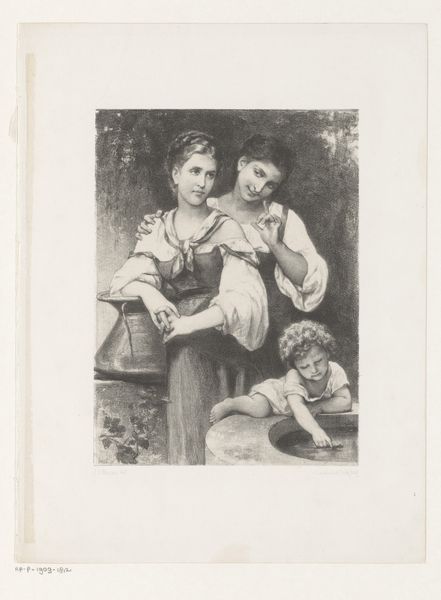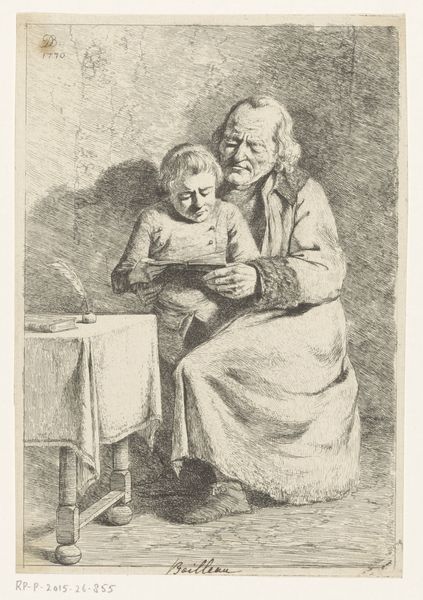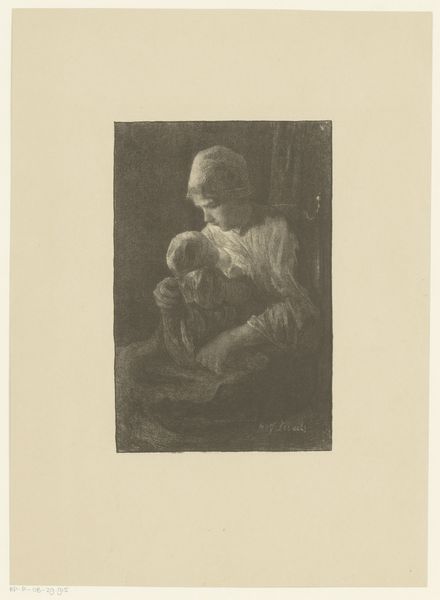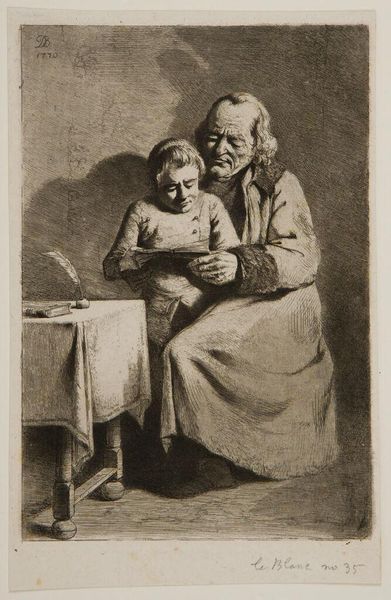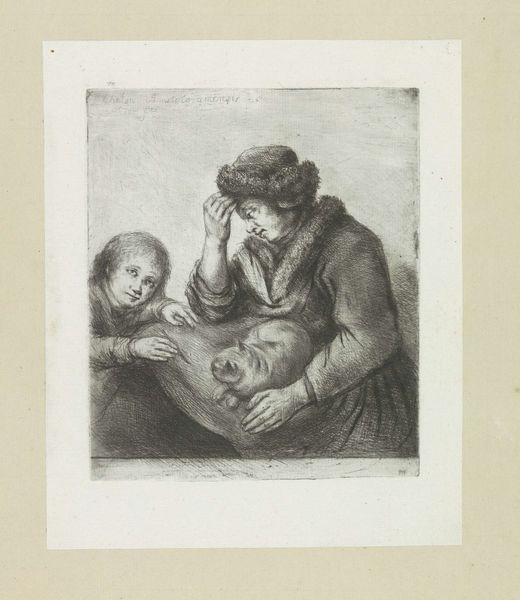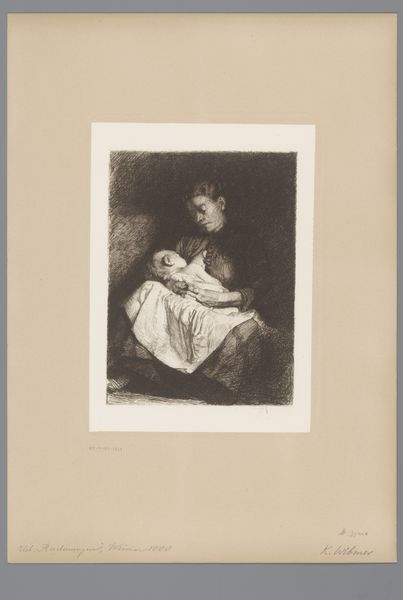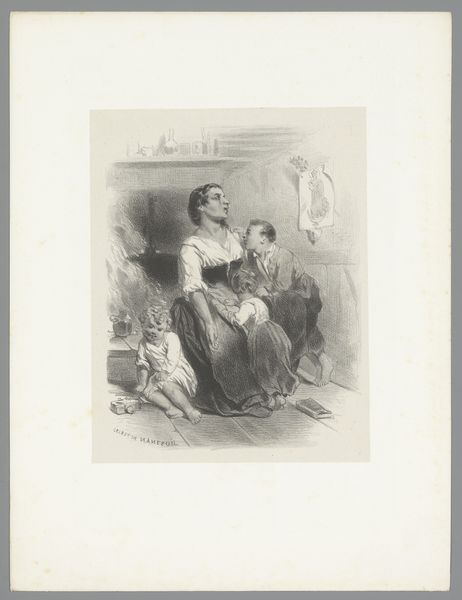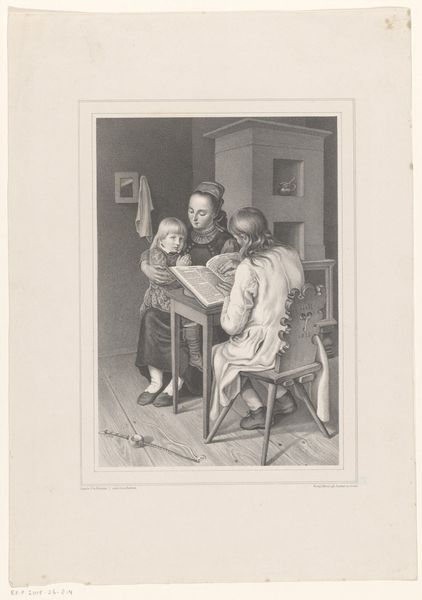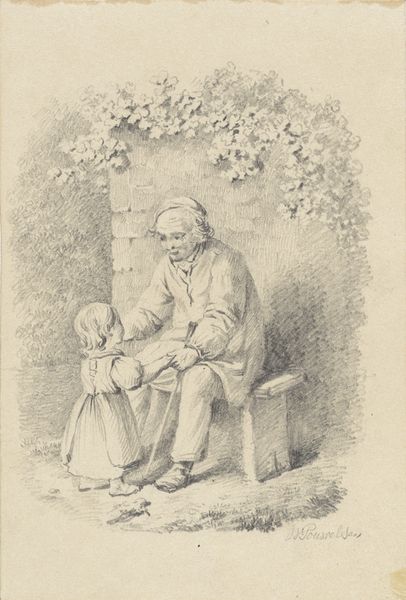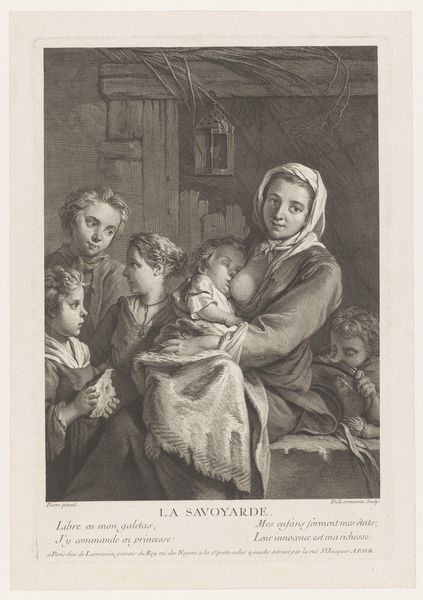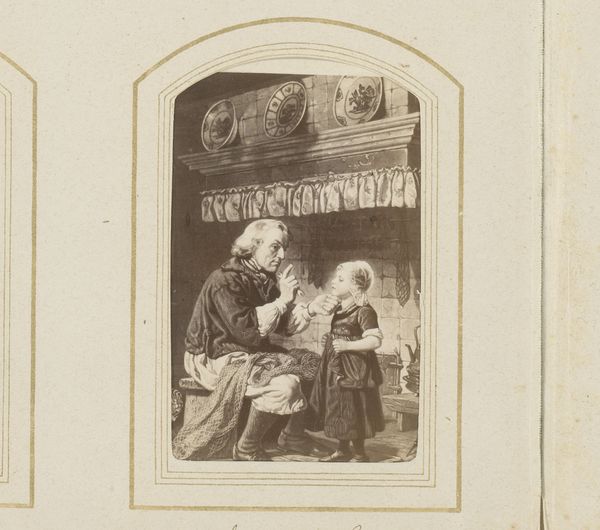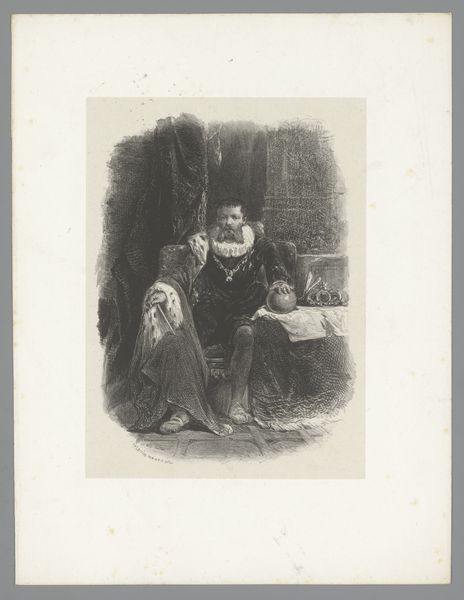
#
photo of handprinted image
#
picture layout
#
pastel soft colours
#
photo restoration
#
light coloured
#
white palette
#
feminine colour palette
#
framed image
#
photo layout
#
soft colour palette
Dimensions: height 189 mm, width 129 mm
Copyright: Rijks Museum: Open Domain
Editor: Here we have "Schoolmeester en jongen een boek lezend" - that translates to "Schoolmaster and boy reading a book" - by Jean Jacques de Boissieu, created around 1770. It's an etching, and it feels very intimate. What's most striking is the intergenerational connection captured here. What do you see in this piece? Curator: It's fascinating to consider this image within the social context of 18th-century education. This etching isn't simply a depiction of literacy; it speaks to the evolving role of education in society and its accessibility, or lack thereof, across social classes. Is this meant for public view? Was it supposed to illustrate that everyone could reach that level of knowledge at the time? Editor: That's a great question. I hadn't thought about it in terms of social status, more about learning in general. So how did the art world and the politics of the time react to an image like this, and were they even aware of its creation? Curator: These images served multiple functions. It provided a template for how knowledge had to be disseminated at the time and in that geographical area. You can imagine these scenes shaping public opinion. It may influence views on who deserves access to education. Does the book here present a particular political or ethical point of view? Was it only available in rich families or to religious people? This book, in itself, as well as the picture that contains it, might be an example of that power struggle, or at least raise awareness. Editor: Wow, I had just viewed it as a sweet scene of learning, but now I see the potential for the image to be a statement, maybe even a political one, about literacy and access. It certainly gives you a lot to reflect on. Curator: Precisely. Art provides us with documents, if you will, about historical views on critical subjects. And by analyzing them, we discover much more about ourselves.
Comments
No comments
Be the first to comment and join the conversation on the ultimate creative platform.
